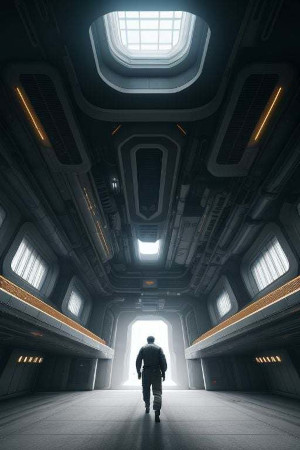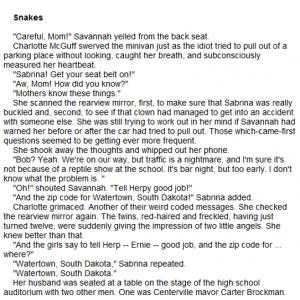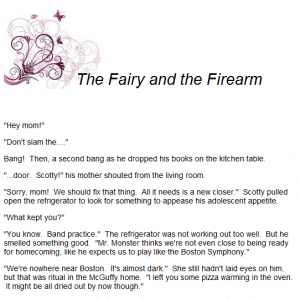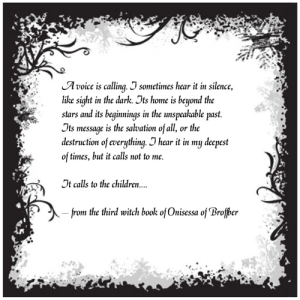2013
Aug
19
Self-Publishing Skills for the Do-It-Yourself Writer
Let's assume you can write. Let's assume you can revise. Let's assume you can edit it into a polished work of art. It's a good thing that you can because hiring a good professional editor for your novel can cost you more than a decent used car and your annual property taxes combined. You look at the prices with your eyes bugging out and have to down a glass of water before you can breathe again. It sort of reminds you of the dentist who chastises you for not having your children's teeth cleaned every few months without taking into account that you would have to sell one of them to pay for the others. So, when it comes to editing, you do it yourself, and you got good at it.
But if you're self-publishing, as you know, your work is only beginning. You don't just need a polished product, you need that that looks polished, surrounded with polish, so that it can compete with the zillion other self-published books. To that end, there are a few more skills that a writer might think about working into her repertoire.
Of course, they all have learning curves, and some of them might look intimidating, but just think about it. So does writing. Someone has claimed that you have to write a million words before you're any good at it, and that seems about right. Others say those million words take about 10,000 hours to reach. But you did it, right? None of this is out of your reach.
Here are some that come to mind. I've put them in what seems like the proper order of importance.
1. E-book formatting
Most indie publishers start with e-books. You don't need to worry about a physical printer and all the little headaches that go along with it, like making sure your cover art wraps around correctly, which depends on the number of pages, which depends on type size, and so on. You can immediately market an e-book worldwide. And e-books are overtaking traditional books in sales.
Besides, e-books are easy to make. If you're writing with Scrivener (why wouldn't you?) all you have to do is compile to EPUB, and there! You have a correctly formatted e-book. But correct is a matter of opinion, and isn't necessarily elegant. Consider the two following pages. They are both the opening of short stories that are going into my anthology, Quantum Incoherence. "Snakes" on the left is as Scrivener compiled it. "The Fairy and the Firearm" on the right is a little workup I did to try to pick up a few gigs on Fiverr, but it turns out that I like it enough to stick with the theme for all the stories. I just need to come up with some more graphics.
Most of the e-books I've read so far look pretty much like "Snakes," but you probably agree that "The Fairy and the Firearm" looks more polished, more professional. It can be details like this that make your work stand above the crowd. I also like to put in title pages in fancy fonts, and every book of my Banak-Zuur series begins with a quote something like this:
Cute, huh?
How to get started
The technology behind e-books is similar — but not identical — to that for web pages. They both use HTML and CSS, and an e-reader is just a special-purpose browser. Therefore, any information or tools supporting web design will point you in the right direction. I wrote a tutorial on it, but although I'm good at writing fiction, I am less good at writing how-tos. I hope it helps.
What you will need
First off, get Sigil. Not only is it a decent EPUB editor, but it's 100% free. It's what I use. I talk about it in the above-mentioned tutorial, but note that it doesn't do everything on its own. It takes some manual editing.
You'll also want either Calibre or KindleGen to convert EPUB files to MOBI. Calibre is a graphical program like what you're probably used to, but can be a bit awkward for converting files. KindleGen is sleek and mean, but it's command-line only. I use KindleGen.
The Kindle Previewer is a handy tool to see exactly how documents render on different platforms that support Kindle apps, and I can guarantee you they won't all be the same. Unfortunately, as of last time I looked, Amazon was the only e-reader manufacturer who offered such a tool. If you want to test your book on a Nook, you'll have to find a Nook. I might also point out that sometimes books display correctly on a Kindle when they don't on the previewer.
2. Graphic Arts
A good book has to have a good cover. We all know the adage, "You don't judge a book by its cover," however, a lot of people do, and even for those who don't, a good cover may be the first thing to attract a reader's attention to the cover copy. Here are three for Quantum Incoherence.
You don't really have to make a cover. If you don't send one to Amazon, they'll make up a generic cover such as the first one. Notice that it screams out, "DON'T BUY ME!" in very genuine capital letters. Riding on the bus one day, I conceived the middle one and cranked it out quick-and-dirty in five or ten minutes. I was fairly happy with it at the time, but as the weeks passed by, I became less and less satisfied.
The main issue is that I had violated a basic rule of life: don't do anything quick and dirty. Do it right. So on the final one, I spent more than five or ten minutes, and tinkered with it until I thought it looked like something that a pro might possibly have done. You might disagree, but the right-hand cover is good enough to convince me to buy the book.
I am lucky enough to have a friend who does exquisite art. At 16, her drawings looked like photographs. But not everyone has a friend like that, so tucking some graphics skills under your belt can only help. And not just covers. You might need graphics for texture maps as you build your skills in number 4 below.
How to get started
I searched around on the Internet and found what looks like a good starting tutorial. Since I've been doing this for so long that I can't remember when I started, I can't say how good of a tutorial it really is. But it does have links elsewhere so you can pursue the gory details to your heart's content.
One thing to keep in mind is that you don't have to learn everything, at least up front. More to the point, you don't have create everything. Here's a secret about my final cover for Quantum Incoherence: I didn't create the background. I licensed it. There are several image acquisition sites out there, and it seems that all of them work differently, but my personal choice is Can Stock Photo. I like them because I don't have to mess with subscriptions and worry about getting my money's worth out of them. You buy credits up front, and spend them as you want. They never expire.
What you will need
Obviously, a graphics program. You've heard of Photoshop, of course. "Hey! That picture's been Photoshopped!" However, if a professional graphics artists did it, it might have been PhotoPainted. Photoshop and its Adobe friends are well-known among the general public, but Corel products are also well-known among the elite. There is a war on between them. I'm a Corel guy myself and use PhotoPaint. I think it's easier to work with, but others will disagree.
Either way, the fact remains that either of these programs costs hundreds of dollars. Fortunately for the fatally impoverished, as I am now, there is a free solution that is almost as good. GIMP. I find it less intuitive to use than PhotoPaint, and some of the Linux-like behavior may startle entrenched Windows users, but the price is great.
3. Video Compositing
This is only a point if you plan to make book trailers. The jury seems to be out on just how effective they are. I've made one for Korvoros, though I keep tweaking it and am now on version 3.1. If you don't plan on making any yourself, just skip this and move on to number 4.
How to get started
I haven't found a good general tutorial on compositing, probably because it's different for every piece of software. Fortunately, once you choose the software, a Google search will turn up dozens of tutorials at various levels.
What you will need
This is where the bad news comes in. You knew there had to be some. Sigil is a good free EPUB editor, and GIMP is a good free graphics editing program, but there is no good free video compositor. The professional tools like Adobe After Effects and Creative4D run hundreds or thousands of dollars. Ouch!
But the news isn't all bad. There are some relatively inexpensive solutions that might get the job done. Wondershare Video Editor seems to run about three stars out of five on reviews, so it must be at least decent, currently on special at $39.95. Sony Movie Studio is about twice the price. I've used neither. However, I have used Movie Studio's big brother, Sony Vegas Pro (starting at a mere $400) and it does a good job. I personally like After Effects better, but you can't buy it anymore. You have to "rent" it at $50 a month. Bad business plan!
I'll add that the free 3D modeling package, Blender, mentioned below, now has some video editing capabilities. I don't know how good they are.
4. 3D Modelling
I wasn't even sure if I wanted to go here, because it might be a fringe skill, and the learning curve is steep. And if you have an artist friend, you're in luck. As for me, I can do graphic arts on a computer fairly well, but when it comes to actually drawing something, I suck. But what I can do is build a 3D model on a computer and render it. Here is one of my favorites that I did for fun in tribute to my favorite Heinlein novel.
If you go back and look at my Korvoros trailer, all of those clips were created this way. It's all the same technology they used to make Toy Story and Wall-E and such, except that those folks are much better at it than I am.
How to get started
The situation here is much like video compositing. You need to pick the software first. I use 3ds Max, but I've tried Maya and Lightwave. Let me tell you, they all work differently although the basic concepts are mostly the same. Fortunately, there are many good tutorials online for these products, too.
And here's a secret: there are lots of geeks out there writing computer games. You might even know one. As a rule, they know all about how 3D modeling works, probably more than you need to know to use these programs. Look one up. There are probably some lurking at your local university.
What you will need
I'm assuming you don't want to run out and spend $3500 on software. So here's the good news. There is a 100% free 3D package that is actually quite good. It's called Blender. I've only played with it, but I've seen some truly photorealistic results out of it, virtually indistinguishable from the big names like 3ds Max and Maya. Browse their site. Also, fortunately, there are a blue bazillion users out there eager to share their knowledge with you.
Now one thing to keep in mind is that good stories have people in them, and none of these rendering packages have anything built in to create people. It takes a long, long time to get good at that. However, there are a couple of other programs specifically designed for making people. One is Poser. Lots of people like it, but I think that whoever designed the user interface was shooting up with something when he did it. Gack! I do like the user interface on DAZ Studio. Lately, DAZ Studio has been free, but that's only because they know there isn't a whole lot you can do with it without buying add-on packages like morphs and clothing. Still, most of those add-ons, individually, aren't all that expensive.
I have rendered scenes in DAZ, but normally I just use it to create models that I transfer to 3ds Max for processing.
Also, if you need landscapes, DAZ's Bryce can make them for you. It used to be expensive, but — am I reading that right? — it seems to be priced at $19.95 now. There are probably add-ons.
I hope this is enough information to get somebody started on the grand adventure of cranking out cool-looking publications. You know that I haven't told you enough for you to actually do any of these yet, but it should be enough to tell you where to look if you have that drive to push back your limits.
You should, you know.
See the follow-up post: How I Make Covers and Promotional Images: the Software.






















Comments
by Tammy Salyer on 2013 Aug 21
Wonderful how-to! Thanks for compiling this.
by Tammy Salyer on 2013 Aug 21
Wonderful how-to! Thanks for compiling this.
You must be logged in to post a comment.